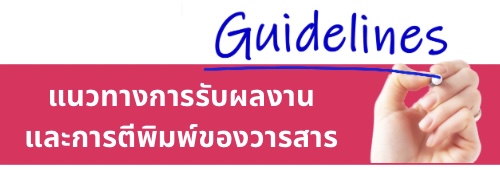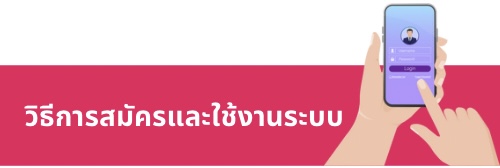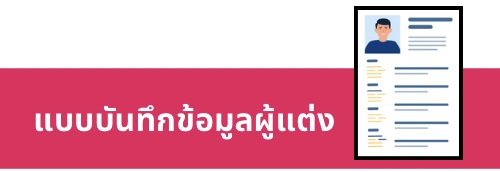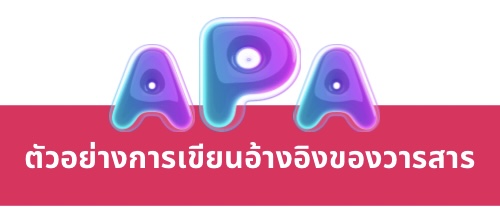การพยาบาลทางไกลเพื่อการดูแลผู้ป่วยติดเชื้อไวรัสโคโรนา 2019 ที่เข้าระบบการแยกกักตัวที่บ้าน : บทบาทพยาบาล
คำสำคัญ:
การพยาบาลทางไกล, โรคติดเชื้อไวรัสโคโรนา 2019, การแยกกักตัวที่บ้านบทคัดย่อ
โรคติดเชื้อไวรัสโคโรนา 2019 เป็นโรคที่สามารถแพร่กระจายได้ง่าย เมื่อติดแล้วผู้ป่วยมีโอกาสเกิดภาวะแทรกซ้อนที่รุนแรง จนเสียชีวิตได้ ในสถานการณ์การแพร่ระบาดที่มากขึ้น แต่ทรัพยากรในการรักษาที่โรงพยาบาลมีจำกัด ทั้งบุคคลากรทางการแพทย์ จำนวนเตียง ยา และสิ่งจำเป็นอื่น ๆ การบริหารจัดการสถานการณ์การแพร่ระบาดของโรคติดเชื้อไวรัสโคโรนา 2019 ของประเทศไทยจึงได้สนับสนุนให้มีการจัดการดูแลผู้ป่วยโรคติดเชื้อโคโรนาไวรัส 2019 ที่ไม่มีอาการ หรือมีอาการไม่รุนแรงที่บ้าน ตั้งแต่ปลายปี พ.ศ. 2563 ซึ่งภายหลังจากลงทะเบียนเข้าระบบแล้ว ผู้ป่วยได้รับคำแนะนำเกี่ยวกับการปฏิบัติตัวเมื่อแยกกักตัวที่บ้าน การจัดการอาการที่อาจเกิดขึ้น การสังเกตอาการที่ผิดปกติที่ควรมาโรงพยาบาล โดยได้รับการติดตามผ่านระบบบริการสุขภาพทางไกลจนครบกำหนดแยกกักตัวที่บ้าน นอกจากนี้ ผู้้ป่วยที่ต้องสอบสวนโรคติดเชื้อไวรัสโคโรนา 2019 ยังเป็นกลุ่มที่ต้องแยกกักตัวที่บ้านก็เป็นกลุ่มที่มีความต้องการการช่วยเหลือผ่านระบบทางไกลด้วยเช่นกัน พยาบาลเป็นบุคลากรทางการแพทย์ที่มีบทบาทสำคัญในการจัดการดูแลผู้ป่วยที่เข้าระบบการแยกกักตัวที่บ้านโดยอาศัยการพยาบาลทางไกล เพื่อลดการเกิดภาวะแทรกซ้อน ลดอัตราตาย ลดการแพร่กระจายเชื้อในชุมชน และทำให้ระบบสาธารณสุขไทยสามารถบริหารจัดการโรงพยาบาลเพื่อผู้ป่วยที่มีอาการรุนแรงได้อย่างเพียงพอ
Downloads
เอกสารอ้างอิง
Aman, F., & Masood, S. (2020). How nutrition can help to fight against COVID-19 pandemic. Pakistan Journal of Medical Sciences, 36(COVID19-S4), S121.
Abdul-Husseein, H. K., Al-Akkam, K. A., Bash, H. S., & Abdul-Husseein, M. K. (2021). Survey of the effects of ivy leave dry extract and bromhexine for management of cough and shortness of breath in COVID-19 Infected Patients. Latin American Journal of Pharmacy, 100-104.
Adly, A. S., Adly, M. S., & Adly, A. S. (2021). Tele management of Home-Isolated COVID-19 patients using oxygen therapy with noninvasive positive pressure ventilation and physical therapy techniques: Randomized clinical trial. Journal of medical Internet research, 23(4), e23446.
Altena, E., Baglioni, C., Espie, C. A., Ellis, J., Gavriloff, D., Holzinger, B., . . . Riemann, D. (2020). Dealing with sleep problems during home confinement due to the COVID‐19 outbreak: Practical recommendations from a task force of the European CBT-I Academy. Journal of sleep research, 29(4), e13052.
Das, H., Panigrahi, S., & Swain, D. (2022). Telenursing-an emerging concept in reducing COVID-19 hospital occupancy. International Journal of Community Medicine and Public Health, 9(1), 414.
Department of Medical Services, Ministry of Public Health, Thailand. (2021). Guidelines for medical practice, diagnosis, care and prevention of infection in hospitals. The case of coronavirus disease 2019 (COVID-19) for doctors and public health personnel, revised edition, 4 August 2021. Retrieved from https://covid19.dms.go.th/Content/Select_ Landding_page?contentId=146
Department of Medical services, Ministry of Public Health, Thailand. (2022). Guidelines for medical practice, diagnosis, care and prevention of infection in hospitals. The case of coronavirus disease 2019 (COVID-19) for doctors and public health personnel, revised 11 July 2022. Retrieved from https://covid19.dms.go.th/Content/Select_Landding_page?contentId=175
Greenhalgh, T., Knight, M., Buxton, M., & Husain, L. (2020). Management of post-acute COVID-19 in primary care. BMJ, 370, m3026. https://doi.org/10.1136/bmj.m3026
Heo, H., Lee, K., Jung, E., & Lee, H. (2021). Developing the first telenursing service for COVID-19 patients: The experience of South Korea. International Journal of Environmental Research and Public Health, 18(13), 6885.
James, S., Ashley, C., Williams, A., Desborough, J., Mcinnes, S., Calma, K., . . . Halcomb, E. J. (2021). Experiences of Australian primary healthcare nurses in using telehealth during COVID-19: A qualitative study. BMJ open, 11(8), e049095.
Jideani, A. I., Silungwe, H., Takalani, T., Omolola, A. O., Udeh, H. O., & Anyasi, T. A. (2021). Antioxidant-rich natural fruit and vegetable products and human health. International Journal of Food Properties, 24(1), 41-67.
Kord, Z., Fereidouni, Z., Mirzaee, M. S., Alizadeh, Z., Behnammoghadam, M., Rezaei, M., . . . Zaj, P. (2021). Telenursing home care and COVID-19: A qualitative study. BMJ supportive & palliative care. https://doi.org/10.1136/bmjspcare-2021-003001
Leonardi, M., Horne, A. W., Vincent, K., Sinclair, J., Sherman, K. A., Ciccia, D., . . . Armour, M. (2020). Self-management strategies to consider to combat endometriosis symptoms during the COVID-19 pandemic. Human Reproduction Open, 2020(2), hoaa028.
Lundy, S. K., & Janes, S. (2016). Community health nursing: Caring for the public’s health. Burlington, MA:Jones & Bartlett Learning.
Parizad, N., Goli, R., Faraji, N., Mam-Qaderi, M., Mirzaee, R., Gharebaghi, N., . . . Haghighi, M. M. (2021). Effect of guided imagery on anxiety, muscle pain, and vital signs in patients with COVID-19: A randomized controlled trial. Complementary therapies in clinical practice, 43, 101335.
Park, S., Brassey, J., Heneghan, C., & Mahtani, K. (2020). Managing fever in adults with possible or confirmed COVID-19 in Primary Care. Centre for Evidence Based Medicine.
Poreddi, V., Kathyayani, B. V., Hatti, N. M., Reddemma, K., Narayana Manjunatha, N. K. C., & Math, S. B. (2020). NIMHANS-telenursing practice guidelines-2020. Retrieved from https://www.researchgate.net/profile/Vijayalakshmi-Poreddi/publication/347410173_NIMHANS_Telenursing_Practice_Guidelines_2020/links/5fdaf6c945851553a0c24189/NIMHANS-Telenursing-Practice-Guidelines-2020.pdf
Supiya, W., & Pimlada, L. (2022). Home isolation: Guidance for patients with COVID-19 infection. Regional Health Promotion Center 9 Journal, 16(2), 597-611.
Thailand Nursing and Midwifery Council. (2021). Announcement of the nursing council on remote nursing approach (tele-nursing). Retrieved from https://www.tnmc.or.th/images/userfiles/files/T_0049.pdf
Tsai, C. L., & Wu, P. C. (2020). Possible beneficial role of throat gargling in the coronavirus disease pandemic. Public Health, 185, 45.
ดาวน์โหลด
เผยแพร่แล้ว
รูปแบบการอ้างอิง
ฉบับ
ประเภทบทความ
สัญญาอนุญาต
ลิขสิทธิ์ (c) 2022 วารสารพยาบาลตำรวจ

อนุญาตภายใต้เงื่อนไข Creative Commons Attribution-NonCommercial-NoDerivatives 4.0 International License.
ผลงานที่ได้ตีพิมพ์แล้วจะเป็นลิขสิทธิ์ของวารสารพยาบาลตำรวจ















